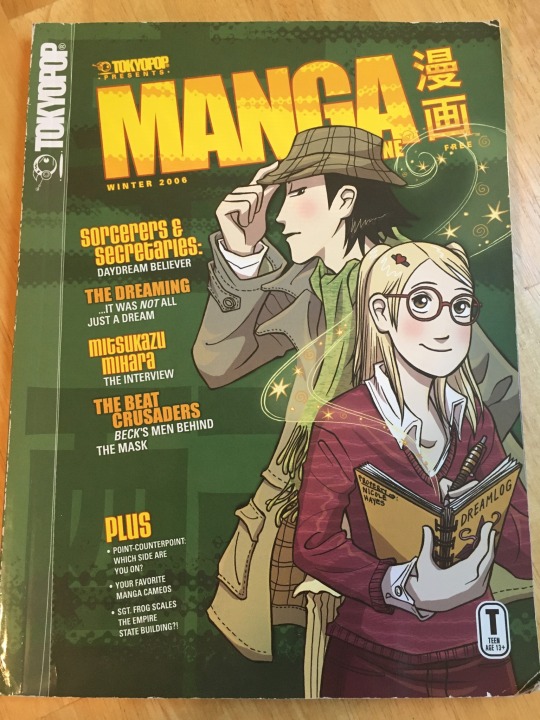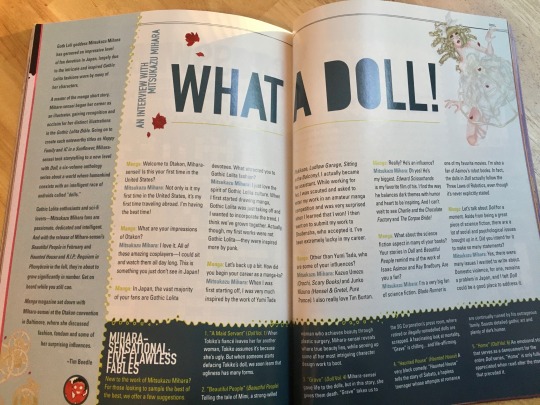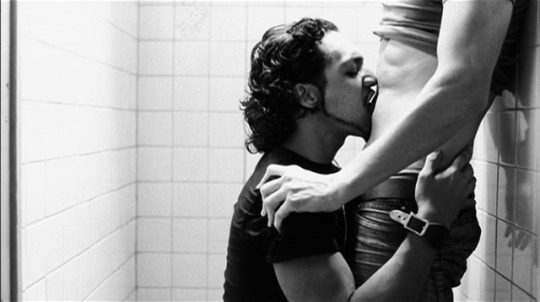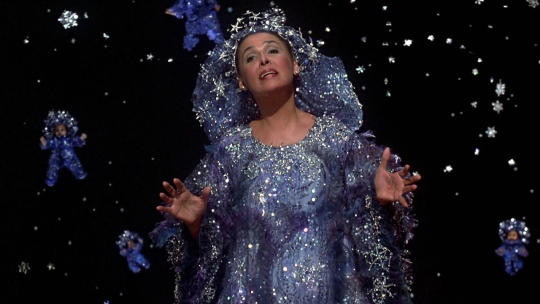#baltimore fashion designers
Video
Bria Bria Bria
#dmv#briabaltimore#vlog#la#new york#chicago#baltimore#designer#style#fashion#emo#diy#dmvlife#dc#washington dc#stylist
23 notes
·
View notes
Photo





Love how these pieces came out. Let me know what you think about these Tevik Clothing graphics.
#tevik#tevikclothing#branding#brand#limited#edition#vintage#clothing#baltimore#baltimoreart#baltimoreartist#graphic#design#graph design#adobe#photoshop#heavyweight#fashion#street#street fashion#streetwear
2 notes
·
View notes
Photo

March 25, 1976 - The Baltimore Sun
Page B1
Capraro is honored for designs at happy fashion show (Excerpt)
By Gabrielle Wise
More than 600 women in Baltimore county know why Betty Ford likes Albert Capraro. They had the chance to back a winning ticket yesterday at Martin's West, when the slim bearded young designer accepted an award as "Bicentennial Designere 1976." It was "You're the Top" in the music department when his selections were introduced.
0 notes
Text
hi everyone, my name is maudlin (previously doll hospital). anyone who knows me and my mom knows that i’m her servant way before i’m her daughter. growing up my peers would ask me if i wanted their moms to talk to mine and i would always freak because i knew that would make things worse. after living in nyc for two years and getting a taste of what it’s like to live out from under her thumb, i had to move back home because my psychiatrist in nyc was extremely negligent, letting me go for weeks at a time without meds. nothing could have prepared me for how triggering it would be to be living back home with my abuser. my osdd got/is getting worse, and i’m seeing my personality fracture into myself and an internal mother figure just to cope with having a shitty one. it’s helpful but ultimately really scary.
but luckily i have new plans for what comes next! i want to go to baltimore city community college to study apparel design and business administration to run my own fashion brand! i have so many ideas and such clarity on what i want to do next, i just need help getting there. all this to say that if you would even just rb this or donate even $1, that would mean the world to me and i would be one step closer from cutting her out of my life forever.
751 notes
·
View notes
Text

Chiefs vs Ravens | Baltimore, MD | January 28, 2024
Mejuri ‘Heirloom Ring in Garnet’ - $598.00
EB and Co ‘Tight End Ring’ - $14.00
Wear by EA x Baublebar ‘Chiefs Necklace’ - $43.99
Jacquie Aiche 'Large Marquise Diamond Pave Signet Ring' - $6,250.00
Wove Made x Michelle Wie West 'Custom Diamond Tennis Bracelet' - $5,680.00 (starting)
By contrast from her relatively non-descript outfit, Taylor went all out with sentimental and Chiefs-approved jewelry including her #SarahExact Mejuri ring. Not only is it very Taylor to wear her heart proudly in this fashion but it's also very Taylor to execute such a high/low mix here. From solid gold forever rings (I will personally vouch for that Heirloom ring from the rooftops), to custom and classy diamond-encrusted tennis bracelets mixed with pieces by women-owned (or women-designed) and locally-made designers. I've so loved seeing her continue to underscore her long-standing fashion pillars even into her game day fashion.
That's Taylor: An enviable mix of aspirational and approachable, all while being unabashedly emotional.
Photo by Rob Carr via Getty Images
#taylor swift#candid#jewelry#mejuri#eb and co#wear by ea#baublebar#wove made#michelle wiewest#jacquie aiche#january 2024#kc chiefs
399 notes
·
View notes
Text
With the release of the Little Mermaid (2023) trailer, I want to tell you all about the gay man who saved Disney
After the death of Walt Disney in 1966 and Roy Disney in 1971, the Disney Animation Studio floundered for over a decade and a half. The movies released following the Disneys’ deaths did not do well at the box office or with critics, and the company began losing money quickly. It didn’t help that during the production of The Fox and The Hound, Don Bluth along with a bunch of other Disney animators left the company to start their own animation studio.
After The Fox and The Hound released in 1981, Michael Eisner (best known as the inspiration for Lord Farquad) took over after Walt Disney’s nephew resigned as CEO. Michael Eisner came into the company with the sentiment that they “had no obligation to make art”, and released The Black Cauldron in 1985 to critical and commercial failure. The company hit rock bottom and in response, Eisner moved the animation studio out of the buildings that were DESIGNED FOR ANIMATORS TO ANIMATE IN and into various hangers, warehouses, and trailers. Eisner was about to get rid of the animation studio for good until Walt Disney’s nephew intervened. Thanks to the mild success of The Great Mouse Detective and Oliver and Company, Eisner gave the animation studio another chance.
That’s where our man comes in.

Howard Ashman was born in Baltimore, Maryland in May of 1950. He and Alan Menken (the composer for many many many Disney films) collaborated on The Little Shop of Horrors. Ashman was the lyricists, librettist, and director of the project while Menken wrote the music. They were nominated for a Grammy Award and Ashman received a Drama Desk Award for Outstanding Lyrics. Ashman then wrote the screenplay for the Frank Oz film adaptation of the musical.
Ashman was brought in to Disney to write a song for Oliver and Company. While there, he was told about several projects the animation studio had on the back burner, one of which was The Little Mermaid.
Ashman became a driving force behind the creation of The Little Mermaid and subsequently, all of the Disney films made between 1989 and 1999. He explained to the animation team how musical theater and animated films were made for each other, and how they had the exact same amount of suspension of disbelief for audiences, which made them a perfect substitute for live action movie musicals which had gone out of fashion after the 1960s.
Ashman wrote all the lyrics to the songs in The Little Mermaid and insisted that Alan Menken be brought on to write the score and music. It was Menken’s first ever movie score and he fucking nailed it. Ashman was the one who insisted on bringing on actors who had musical theater backgrounds. He also insisted that Sebastian the crab be Jamaican so he could include Caribbean inspired music and have an “up” number during the movie. He explained to the writers how musicals were structured, where to include songs, and how those song would weave themselves into the story and feel natural. Ashman was credited as a producer on the film, which was released in 1989 to ENORMOUS SUCCESS. Ashman then went on to write the lyrics to the songs in Beauty and the Beast and three songs from Aladdin, the latter of which he pitched to Disney as an animated musical and wrote a treatment for.
After the release of The Little Mermaid, Ashman revealed to Menken that he had tested positive for HIV/AIDs. Jeffery Katzenburg, the then animation director at Disney, fully supported Ashman during the making of Beauty and the Beast, even creating a studio near his home in New York so he could work easier while receiving treatment. He got to see a private early screening of Beauty and the Beast before he lost his eyesight. He died of heart failure seven months before the film was released in November of 1991.
Beauty and the Beast received a standing ovation at its premiere and was the first and only animated movie to be nominated for Best Picture at the Oscars, a decade before the Best Animated Feature category was added. The film is dedicated to Howard Ashman, a message at the end of the film reading, "To our friend Howard, who gave a mermaid her voice and a beast his soul, we will be forever grateful.“ Beauty and the Beast won for Best Original Song at the Oscars, the award presented to Alan Menken and Howard Ashman. Ashman’s partner Bill Lauch accepted the posthumous award for Ashman, making it clear to the audience that he and Howard were a couple and loved each other. Disney was furious that Lauch had said those things during his acceptance speech.
Following Ashman’s death, the 2002 special DVD release of Beauty and the Beast added the song “Human Again” which Ashman and Menken wrote but was cut from the original film. The DVD also featured a special short called Howard Ashman: In Memorium. It features many people from the animation studio talking about Ashman and his invaluable contributions to the films he worked on. Jeffery Katzenburg said that there were two angels watching over them during his days at Disney: Walt Disney himself, and Howard Ashman.
If it weren’t for Howard Ashman, a gay man who died of AIDs in 1991, Disney would not be what it is today. They would have continued to flounder and eventually have gone under. Ashman brought Disney back to life and gave us unforgettable films and inspired countless others. He was the backbone of the Disney Renaissance, creator of the formula that these films followed and allowed them to succeed where previous films hadn’t.
And the modern Disney Corporation refuses to acknowledge his existence. While doing research for this post, I found a documentary on Disney+ about Howard Ashman. It has a one minute long trailer on the Disney+ YouTube account and that’s it. There’s no other marketing for this documentary, no one posting about it, NOTHING. It came out in 2018. FOUR YEARS AND NO ONE KNOWS IT EXISTS. Disney has been erasing the existence of queer people in their history and continue to profit off of the work that queer people did to keep their company afloat. The Beauty and the Beast remake was the first Disney movie to make over a billion dollars and in doing so, they butchered the work of a dying gay man who didn’t even get to see the finished film he worked so hard on.
So, as you make art and gif posts about The Little Mermaid (2023) as more and more trailers and promotional material come out for it, remember Howard Ashman. Remember the man who gave many of us our childhoods, who gave a mermaid her voice and a beast his soul.
Rest in peace, Howard.
Here is a video the goes more in depth about Howard’s contributions to Disney and the history surrounding the importance of The Little Mermaid:
undefined
youtube
#the little shop of horrors#little shop of horrors#the little mermaid#howard ashman#disney#disney animated movies#disney animated classics#disney renaissance#musical#musicals#movie musicals#movie musical#movie music#history#lgbt history#LGBT+ history#LGBT historical figures#lgbt+ historical figures#tw aids#tw death#tw gay death#tw disney#alan menken#walt disney#jeffery katzenburg#michael eisner#roy disney#roy o disney#roy e disney#beauty and the beast
221 notes
·
View notes
Photo

Three Oaks, #Baltimore, Maryland (USA) by Place Architecture:Design @placearchitecturedesign. Read more: Link in bio! Photography: Tom Holdsworth Photography @holdsworthphoto. Place Architecture:Design: Our clients approached us to help turn their 1980’s two-story contemporary into a home that reflects their vision by reimagining the kitchen, primary bathroom and front entry. As empty nesters, it was important to create an environment for aging in place and entertaining large family gatherings. The project goals focused on creative, efficient design while adding natural light and a modern aesthetic to the existing spaces… #usa #maryland #архитектура www.amazingarchitecture.com ✔ A collection of the best contemporary architecture to inspire you. #design #architecture #amazingarchitecture #architect #arquitectura #luxury #realestate #life #cute #architettura #interiordesign #photooftheday #love #travel #construction #furniture #instagood #fashion #beautiful #archilovers #home #house #amazing #picoftheday #architecturephotography #معماری (at Baltimore, Maryland) https://www.instagram.com/p/CoGw8aBMZR3/?igshid=NGJjMDIxMWI=
#baltimore#usa#maryland#архитектура#design#architecture#amazingarchitecture#architect#arquitectura#luxury#realestate#life#cute#architettura#interiordesign#photooftheday#love#travel#construction#furniture#instagood#fashion#beautiful#archilovers#home#house#amazing#picoftheday#architecturephotography#معماری
129 notes
·
View notes
Text
November

Arcane :
Jinx
Vi
Vi & Caitlyn
Ellie Williams:
Where We Meet @s-4pphics
Summary: Monsters form your past come back.
Warnings: Angst, Death, Visions, Animal Death
Specials Tags: Demon AU, Dark
Smut: Yes
One of your girls @lovelettersfromluna
Summary: When Ellie’s usual filming partner tells her she’s gotten into a relationship, she ends up needing to find a new one, who better than her sweet little roommate?
Warnings: None
Specials Tags: Cam girl au
Smut: Yes
Dina and Ellie @coeurify
Summary: Dina and Ellie enjoy their time with you.
Warnings: None
Specials Tags: None
Smut: Yes
Study Method @elsdolly
Summary: You were the perfect housewife
Warnings: None
Specials Tags: Study sex
Smut: None
Watercolor Eyes @enbesbians
Summary: Life felt glum. you didn’t have the confidence in yourself, you wanted to be cool, you wanted to feel desired. you met a girl named Ellie.
Warnings: Sad Ending, Angst
Specials Tags: None
Smut: None
Satisfied @elliespassagerprincess
Summary: You’re needy and relentless, but Ellie needs to study. luckily your smart girlfriend thinks of a perfect way to fix both of your issues with her tongue.
Warnings: None
Specials Tags: Toxic Relationships, Murder
Smut: None
K.O. @callmelola111
Summary: As hours, minutes, and seconds count down till the new year, secrets are revealed and trust is broken. who knew the downfall of your life could be so freeing—and that a total stranger would be the one to catch you.
Warnings: Toxic Relationship
Specials Tags: None
Smut: Yes
Ghostly Night @lonelyfooryouonly
Summary: Going on a Halloween party and meeting someone with a Ghostface mask couldn't go that wrong, could it now?
Warnings: Muder
Specials Tags: Muilty chapter. Ft. Dina
Smut: Yes
Joel Miller:
Crave @allfoolsinluv
Summary: You've been babysitting for Joel and Tess for quite some time now. It's a good gig to have while you're working towards your degree. You like them a bit more than you probably should.
Warnings: None
Specials Tags: Muilty chapter.
Smut: Yes
Copycat Killer @beskarandblasters
Summary: Joel is a famous singer and Copycat Killer is an obsessed fan. She’s willing to do anything and go anywhere to learn more about Joel.
Warnings: Drinking, Drugs, Dub con,
Specials Tags: Rock star Au, Stalker Au
Smut: Yes
Abby Anderson:
It's Tough To Be A Mom @sapphicsentbycyberlife
Summary: Abby gets called to the office at your son Peter's school after he gets into a fight and she almost gets into a fight of her own.
Warnings: Homophobia
Specials Tags: Mom Abby
Smut: No
High Strung @hier--soir
Summary: Abby has seemed distracted in your sessions as of late. when you discover why, you help to ease some of her tension.
Warnings: Homophobia
Specials Tags: Airplane AU
Smut: Yes
Red Eye @pawnshopbleusSummary: After a horrible encounter with a passenger, Abby helps you feel better.
Warnings: Homophobia
Specials Tags: Personal Trainer Au
Smut: Yes
The perfect fit @atomicami
Summary: It’s the start of your new job working for Armani as a fashion designer, and your first assignment is to design and create a suit for an upcoming runway event. despite the fact that you can’t stand your chosen model, you also can’t help but find her very attractive too.
Warnings: None
Specials Tags: Fashion Au
Smut: Yes
Burning Desire @prettyinsophie
Summary: With Abby away at some party and your body aching and asking for release, you can’t help but touch yourself while pretending it’s your roommate.
Warnings: None
Specials Tags: Roommate Au
Smut: Yes
Hannibal:
Knives belong in the kitchen @madisonwritesstuff
Summary: I'm so thirsty for this man
Warnings: None
Specials Tags: None
Smut: Yes
We won't let go again @hannibals-favourite-meal
Summary: Moving to Baltimore was supposed to be a fresh start, to escape the ghosts of your past but a budding new friendship with an FBI profiler leads you back to the man who left you behind
Warnings: None
Specials Tags: None
Smut: No
Anakin Skywalker
Saudade @strangeshoepatrolbandit-alt
Summary: Anakin wanted you. Vader has you
Warnings: None
Specials Tags: Mutil Chapter
Smut: No
8 notes
·
View notes
Text
In conjunction with @silvermoon424’s new project to scan and archive Mitsukazu Mihara’s 6-volume manga series Dolls: IC in a Doll, here is a copy of an interview Mihara gave in 2006 with Manga Magazine at Otakon, recorded here by Tokyopop!



What a Doll! An Interview with Mitsukazu Mihara
(On the left-hand side):
Goth Loli goddess Mitzukazu Mihara has garnered an impressive level of fan devotion in Japan, largely due to the intricate and inspired Gothic Lolita fashions worn by her characters.
A master of the manga short story, Mihara-sensei began her career as an illustrator, gaining recognition and acclaim for her distinct illustrations in the Gothic Lolita Bible. Going on to create such noteworthy titles as Happy Family and IC in a Sunflower, Mihara-sensei took storytelling to a new level with Doll, a six-volume anthology series about a world where humankind coexists with an intelligent race of androids called “dolls”.
Gothic Lolita enthusiasts and sci-fi lovers - Mitsukazu Mihara fans are passionate, dedicated and intelligent. And with the release of Mihara-sensei's Beautiful People in February and Haunted House and R.I.P.: Requiem in Phonybrain in the fall, they're about to grow significantly in number. Get on board while you still can.
Manga magazine sat down with Mihara-sensei at the Otakon convention in Baltimore, where she discussed fashion, fandom and some of her surprising influences.
-Tim Beedle
(At the bottom:)
MIHARA-SENSATIONAL: FIVE FLAWLESS FABLES
New to the work of Mitsukazu Mihara? For those looking to sample the best of the best, we offer a few suggestions.
"A Maid Servant" (Doll, Vol. 1) When Tokiko's fiancé leaves her for another woman, Tokiko assumes it's because she's ugly. But when someone starts defacing Tokiko's doll, we soon learn that ugliness has many forms.
"Beautiful People" (Beautiful People) Telling the tale of Mimi, a strong-willed woman who achieves beauty through plastic surgery, Mihara-sensei reveals where the true beauty lies, while serving up some of her most intriguing character design work to boot.
"Grave" (Doll, Vol. 4) Mihara-sensei gave life to the dolls, but in this story, she gives them death. "Grave" takes us to the SG Corporation's press room, where retired or illegally remodelled dolls are scrapped. A fascinating look at mortality, "Grave" is chilling...and life-affirming.
"Haunted House" (Haunted House) A very black comedy. "Haunted House" tells the story of Sabato, a hapless teenager whose attempts at romance are continually ruined by his outrageous family. Boasts detailed gothic art and plenty of dark humor.
"Home" (Doll, Vol. 6) An emotional story that serves as a denouement for the entire Doll series, "Home" is only fully appreciated when read after the stories that preceded it.
(In the center:)
Manga: Welcome to Otakon, Mihara-sensei! Is this your first time in the United States?
Mitsukazu Mihara: Not only is it my first time in the United States, it's my first time traveling abroad. I'm having the best time!
Manga: What are you impressions of Otakon?
Mitsukazu Mihara: I love it. All of these amazing cosplayers - I could sit and watch them all day long. This is something you just don't see in Japan!
Manga: In Japan, the vast majority of your fans are Gothic Lolita devotees. What attracted you to Gothic Lolita fashion?
Mitsukazu Mihara: I just love the spirit of Gothic Lolita culture. When I first started drawing manga, Gothic Lolita was just taking off and I wanted to incorporate the trend. I think we've grown together. Actually, though, my first works were not Gothic Lolita - they were inspired more by punk.
Manga: Let's back up a bit. How did you begin your career as a manga-ka?
Mitsukazu Mihara: When I was first starting off, I was very much inspired by the work of Yumi Tada (Yukikaze, Ludlow Garage, Sitting in the Balcony). I actually became her assistant. While working for her, I was scouted and asked to enter my work in an amateur manga competition and was very surprised when I learned that I won! I then went on to submit my work to Shodensha, who accepted it. I've been extremely lucky in my career.
Manga: Other than Yumi Tada, who are some of your influences?
Mitsukazu Mihara: Kazuo Umezu (Orochi, Scary Books) and Junko Mizuno (Hansel & Gretel, Pure Trance). I also really love Tim Burton.
Manga: Really? He's an influence?
Mitsukazu Mihara: Oh yes! He's my biggest. Edward Scissorhands is my favorite film of his. I find the way he balances dark themes with humor and heart to be inspiring. And I can't wait to see Charlie and the Chocolate Factory and The Corpse Bride!
Manga: What about the science fiction aspect in many of your books? Your stories in Doll and Beautiful People remind me of the work of Isaac Asimov and Ray Bradbury. Are you a fan?
Mitsukazu Mihara: I'm a very big fan of science fiction. Blade Runner is one of my favorite movies. I'm also a fan of Asimov's robot books. In fact, the dolls in Doll actually follow the Three Laws of Robotics, even though it's never explicitly stated.
Manga: Let's talk about Doll for a moment. Aside from being a great piece of science fiction, there are a lot of social and psychological issues brought up by it. Did you intend for it to make so many statements?
Mitsukazu Mihara: Yes, there were many issues I wanted to write about. Domestic violence, for one, remains a problem in Japan, and I felt Doll could be a good place to address it.

(Off to the left:)
Doll is fearless in its subject matter, tackling controversial issues such as spousal abuse, gender inequality, bulimia and sexual objectification.
(Center, continuing from previous page:)
Mitsukazu Mihara: However, it was never intended to be at the sacrifice of the story. Telling a good story comes first.
Manga: Your stories often cross into the fantastic or surreal, but the characters and their emotions always feel real and relatable. How do you pull this off?
Mitsukazu Mihara: I take my inspiration from my own life and I only write about what I know. Now, I'll often take familiar things and exaggerate them for effect, but I have to stick to what I'm familiar with. For me to do it any other way would weaken the story.
Manga: How does Gothic Lolita fit into it?
Mitsukazu Mihara: In Doll, Gothic Lolita fashion symbolizes eternal beauty. The perfect Ghotic Lolita never ages - she remains young. It's as if she's not human, but a machine - or a doll.
Manga: Do you have a favorite character in Doll?
Mitsukazu Mihara: I like Ichiro, the Remodeler. Of all the characters, he's the most I like.
Manga: What has your experience been like working with an American entertainment company, as opposed to a Japanese company?
Mitsukazu Mihara: It's actually easier to work with TOKYOPOP than with Japanese companies. Most publishers are not as concerned with quality, but TOKYOPOP pays extra attention to keeping the integrity of my work. I am extremely happy.
Manga: What are you working on now?
Mitsukazu Mihara: I have a couple of projects I'm working on: Doku Hime and Shigeshoshi.
Manga: Do you have a message for your fans in America?
Mitsukazu Mihara: Thank you for all your support! I'm so pleasantly surprised and grateful that the American fans "get it" despite all of the cultural differences! The fact that Gothic Lolita is so popular here in the States pleases me very much!
(End of interview and article)
#doll#doll: ic in a doll#manga#mitsukazu mihara#manga-ka#tokyopop#manga magazine#otakon#interviews#2006#gothic lolita#fashion#robots#androids#silvermoon424#archival media
18 notes
·
View notes
Text

Jan Sanders van Hemessen (Hemessen c. 1504-1556 Antwerp), Double portrait of a husband and wife, half-length, seated at a table, playing tables.
Oil on panel.
Note: Jan Sanders van Hemessen’s Double portrait of a husband and wife is one of the most exciting Early Netherlandish paintings to appear on the market in years. It is a masterpiece by one of the foremost painters in Antwerp during the second quarter of the 16th Century. This revolutionary double portrait, prominently signed at lower right along the edge of the table “IOHANNES[S] SANDERS/DE HEME[SSE]N PINGEBAT 1532” and executed on an ambitious scale, is the second earliest work known to be dated by Hemessen and was undoubtedly an important commission for the young artist. In a cozy interior bathed in bright sunlight, a couple enjoys a game of chance and strategy known as tables, an ancestor of backgammon. Seated in a leather chair embellished with a colorful geometric design, the woman is handsomely dressed in a black gown with fur trumpet sleeves over full undersleeves of dark rose velvet. A sheer partlet covers her décolletage, while a crisp linen hood conceals her auburn hair. The lady’s waist is cinched by a gold girdle from which hangs a string of rosary beads, their bright coral hue popping against their dark background. The woman’s gaming partner is equally fashionably dressed in a black overgown lined with luxurious lynx fur, a cap jauntily perched on his head. Beneath his dark doublet his pristine linen undershirt peeks through, its collar embroidered in blackwork with a pale blue lozenge pattern. Though the sitters have yet to be identified, their costly and stylish attire suggest that they are a wealthy Flemish burgher and his wife.
The couple’s game board, made of two hinged wooden compartments, occupies the center of the table before them. The disposition of the black and white draughtsmen, as well the cast dice that together number eleven, reveal that their game is underway. Nearby, several other elements, each painted with such care that it could stand as an image on its own, also grace the table’s surface. These include a still-life of ripe fruit, a quince freshly cut with a knife featuring a gilded handle, a glass filled with wine, a bird resembling a blue-fronted Amazon parrot, and a cracked walnut.
There exists in western art a long tradition of representing backgammon and its early variations, the origins of which can be traced back to Mesopotamia. From the medieval period onward, the game was often used as an emblem of vice – following the Gospel of Matthew, soldiers appear in countless crucifixion scenes playing dice at the foot of the cross, and a tables board appears beneath the harlequin figure in Pieter Bruegel’s circa1562 The Triumph of Death (Museo del Prado, Madrid). A tables board is equally present in the background of the Magdalene with a Lute (Gemäldegalerie, Berlin), a painting nearly contemporary to the Stella portrait and formerly attributed to Hemessen himself (see B. Wallen, op. cit., 1983, p. 94, fig. 38, as Brunswick Monogrammist). There, the game rests on a table in the room behind the saint, an allusion to the transience of the earthly pleasures enjoyed by Mary Magdalene in her earlier, sinful life (P.H. Jolly, loc. cit.). A 1529 drawing by Pieter Coecke van Aelst (Museum Boijmans-van Beuningen, Rotterdam) makes this message more explicit, showing a poor and ragged peasant handing over a chicken, his last worldly possession, as payment to the young temptress who has soundly beaten him at tables (see G. Marlier, La Renaissance Flemande: Pierre Coecke d’Alost, Brussels, 1966, pp. 88-90, fig. 27).
Yet during this same period, many artists portrayed the game as a courtly pastime, free from any obvious moralizing overtones. Such is the case, for example, with a circa 1450-1475 marginal illumination framing the Annunciation page from a Northeastern French Book of Hours (fig. 1; The Walters Art Museum, Baltimore) and a pen and brown ink drawing of a Seated couple playing trictrac and standing woman playing checkers attributed to Albrecht Dürer, circa 1492-93 (Bibliothèque nationale de France, Paris; see B. Butts, and L. Hendrix, Painting on Light: Drawings and Stained Glass in the Age of Dürer and Holbein, Los Angeles, 2000, no. 7). Scenes like these, featuring well-to-do members of the opposite sex playing tables, typically possess an amorous connotation. Such is the case in the present painting, although it has the distinction of seemingly being the earliest to show the game being played in the context of a portrait (B. Wallen, op. cit., 1971, p. 75).
Hemessen’s double portrait may have been commissioned to commemorate a wedding. The painter emphasized the strong connection between the couple by portraying the wife resting her hand on her husband’s shoulder as the two gaze intensely at each other. In his 1971 study on the portraits of Jan van Hemessen, Burr Wallen linked the present portrait, then in the Balcarres collection, to the very popular battle of the sexes that continued to rage on in sixteenth-century Europe, although the couple’s affable demeanor suggests that the quarrel’s playful dimension prevails here. Accordingly, Wallen interprets the composition as an expression of the concordia between the husband and wife. “In fact,” he writes, “there may be reason to believe the couple to be united together against a common foe who lies unseen behind the peaceful domestic exterior” (ibid., p. 76). For the scholar, the ominous nature of this opponent could be signaled by the dice, which have landed on five and six, whose combined sum of eleven carried portentous associations in the 16th century. A similar result of a dice roll is seen, as Wallen notes, in the hand of the gambler in Hemessen’s 1536 Parable of the Prodigal Son (Musée Royaux des Beaux-Arts, Brussels), a painting in which life’s temptations are made explicit.
Though Wallen’s interpretation is compelling, one need not necessarily envisage a common foe to read the scene. Rather, it is equally plausible that just a moment ago, the husband and wife were playing opposite one another, as is standard, but he has now come around to be closer to her to discuss a finer point of the game. Indeed, something of note has clearly occurred, as evidenced by the couple’s gesturing toward the black draughtsmen nearest her. Presenting his sitters in this manner, Hemessen shows his awareness of the artistic advances of his Italian contemporaries and Renaissance masters, such as Moretto da Brescia, Romanino and Savoldo, but also Raphael, Bronzino and Parmagianino, whose paintings he would have seen during his Italian sojourn, a few years earlier (ibid., pp. 76-77). As Wallen observes, in this double portrait Hemessen 'achieves a compromise between northern and southern aspirations that is weighted on the side of the north and its tradition of pragmatic realism in portraiture, a compromise that is in many ways similar to the contemporary works of Hans Holbein'. (ibid.). Indeed, Hemessen may have had occasion to meet Holbein, who likely visited Antwerp on his trips between England and Basle in 1528 and 1532.
Following a pictorial tradition deeply rooted in Flemish art, Hemessen chose to tilt the table upward, and in doing so, defy the laws of perspective, to give the spectator a better view of its contents. Thoughtfully articulated and centrally positioned, the game itself is at the heart of the composition, but the still-life elements too add another layer of meaning to the scene. Placed close to the picture plane, they recall the symbolic objects carefully arranged on foreground tables in representations of the Virgin in Child in early sixteenth-century Flemish painting. In particular, many of the items here relate closely to those found in Joos van Cleve’s Holy Family of circa1512-13 (fig. 2; New York, Metropolitan Museum of Art), thus revealing the enduring appeal of this convention. Especially noteworthy in this respect is the pewter charger piled high with beautifully rendered fruit rich in connotations, such as the apples that signify the Fall of Man, the cherries that evoke paradise and the grapes, which, like the glass of wine on the other side of the table, denote the Eucharist. The walnut, as Saint Augustine tells us, is to be associated with Jesus: its outer hull represents Christ’s flesh, its hard shell, the wood of the cross, and its kernels, his divinity.
Common to both paintings is also the elegant knife set at an angle, whose blade catches the light. In the Stella portrait, however, the knife has been used to cut a quince, which in addition to its religious significance, was associated with love, marriage and fertility. In fact, according to Plutarch, brides were encouraged to eat quince, a tradition that was revived in the Renaissance. Andrea Alciati elucidates the reasoning behind this practice in the Emblematum Liber (first published in Augsburg in 1531), under the illustration for the emblem 'Cotonea' (Quince Tree), writing that the fruit should be given to the newly wed because “it is conductive to good taste and disposition, and also that their breath might be sweet / and a seductive charm might linger on their lips” (see A. Bayer et al., Art and Love in Renaissance Italy, New York, 2008, p. 325). The presence of the cut quince can thus be understood in relation to the painting’s presumed marital theme. In addition to being a marker of wealth and status, the parrot may also be interpreted in symbolic terms, as it is an emblem of the Virgin Mary. By placing the halved walnut and Parrot close together, Hemessen thus evokes the pairing of Jesus and Mary, Adam and Eve, and a virtuous husband and wife.
Recent study of the painting with infrared reflectography did not reveal significant underdrawing. No major changes to the composition were visible, with possibly one notable exception (fig. 3). The artist appears to have expanded the length and shifted the angle of the table's left and right edges. Further study would be required to confirm that oblique lines and shifts in tonality seen in these areas are not artifacts of the ground preparation or subtle effects in the paint film itself, but if these are, in fact, compositional changes, they could suggest that the still life and wine glass at left were not originally planned, but added at a later stage in the design process.
Though conceived according to the conventions of Early Netherlandish painting, Jan van Hemessen’s double portrait is in many ways revolutionary. Independent portraits of married couples were already commonplace in the 15th century, but these were almost exclusively painted on separate panels and designed to be displayed as pendants (see M. Ainsworth, Jan Gossart, p. 276). While a discrete number of Early Netherlandish double portraits painted on single supports that predate Hemessen’s painting are known, their sitters almost always appear to be psychologically isolated from one another. Such is the case with Jan Gossart’s Portrait of an Old Couple (National Gallery, London), painted just a few years earlier than Hemessen’s masterpiece, as well the Double portrait of Dirck Borre van Amerongen and Maria van Snellenberg by the Master of the Amsterdam Death of the Virgin (Musueum Boijmans Van Beuningen, Rotterdam; ibid.). One of the earliest examples is Hans Memling’s Portrait of an Elderly Couple, which today is divided between the Preussicher Kulurbesitz., Gemäldegalerie, Berlin, and the Musée du Louvre, Paris, although originally the portraits of the man and woman were joined together with dowels to form a single panel. Notably, in the second half of the 15th century, double portraits on single panels began to develop as a popular format in Germany, and it has been proposed that Hans Memling’s Germanic origins inspired him to bring this style to the Netherlands, but some have challenged this idea, arguing that since the genre developed late in the century, Memling’s portrait should be viewed as his own invention (see de Vos, op. cit., no. 10; T-H. Borchert, Memling’s Portraits, Ghent, 2005, pp. 155-56. The German examples also often appear in architectural settings (see, for example, Thoman or Hans Burgkmair the Elder’s 1498 Double portrait of Jakob Fugger and Sybilla Artzt (The Schroder Collection, London), rather than against landscapes.
Strikingly original in its conception, Jan Sanders van Hemessen’s double portrait is best understood as a continuation of a tradition of allegorical double portraits whose origins lie in Jan van Eyck’s astonishing panel of Giovanni Arnolfini and his Bride (fig. 4; National Gallery, London). Painted in 1434, this small panel represents the Italian merchant and his wife, standing in a bedchamber of a Flemish townhouse. It is filled with objects that appear to have symbolic value relating to the sacrament of marriage, although the painting’s precise message and even the identity of the bride have been debated for centuries. Van Eyck’s invention seems not to have been immediately imitated, although there are echoes of it in the following decade, with Petrus Christus’s Goldsmith in his shop (fig. 5; The Lehman Collection, The Metropolitan Museum of Art, New York), which is now believed by some to represent Willem van Vleuten, goldsmith to the Duke of Burgundy, visited by Mary of Gelders and James II, King of Scots, who are in the process of buying a wedding ring. Like Hemessen’s double portrait, Petrus Christus’s painting is filled with symbolic and moralizing imagery, in particular the convex mirror, a traditional symbol of vanity, and the worldly temptations reflected therein. An even closer potential source for Hemessen’s painting is Quentin Metsys’s The Moneylender and his wife(fig. 6; Musée du Louvre, Paris). This signed and dated work was painted in Bruges in 1514. Though not specifically a portrait and not quite life-size, the panel similarly depicts a husband and wife seated at a table in a room filled with carefully described objects. The figures’ outdated attire, however, removes them from their contemporary setting, allowing the painting to be read as an allegory of Christian Virtue and the condemnation of avarice (L. Silver, The Paintings of Quenten Massys with a Catalogue Raisonné, Montclair, 1984, p. 212). Yet the remarkable casualness of the sitters’ interaction in Hemessen’s painting is nowhere to be found in Metsys’s work. Instead, for a closer prototype, one can turn to the Master of Frankfurt’s Self Portrait with his Wife (fig. 7; Koninklijk Museum voor Schone Kunsten, Antwerp), which was painted around 1496 in Antwerp. The painting measures 31.1 x 47.2 cm and presents the artist and his wife on a single panel, seated before a non-descript background. The couple’s tender interaction (the artist has his arm around his wife’s waist) as well as the remarkable still life elements on the table seem to anticipate Hemessen’s composition. The younger artist would likely have encountered the painting due to his membership in the Antwerp Guild of Saint Luke. Jan Sanders was born in the village of Hemessen (Hemishem) outside Antwerp. In 1519-20, he was apprenticed to Hendrik van Cleve I. Stylistic evidence suggests that he might next have worked with the Master of the Magdalen Legend at the royal court at Mechelen. There, he could have come in contact with court painters Jan Cornelisz. Vermeyen and Jan Gossart. During the 1520s, Hemessen traveled to Italy, as confirmed by his painted copy of Andrea del Sarto’s fresco of Charity in the Chiostro Scalzo, Florence (untraced). In 1524, Jan became a master in the Guild of St. Luke in Antwerp, and soon thereafter established a workshop in that city. In 1545, he married Barbara de Fevere, the daughter of a successful Antwerp cloth merchant. In part due to this felicitous union, but also thanks to flourishing artistic career, he became a man of considerable wealth. In 1548, Hemessen served as dean of the Antwerp Guild of St. Luke. He fathered several children, many of whom became artists in their own right, most famously his daughter, Catharina.
Courtesy Alain Truong
11 notes
·
View notes
Text
Listening to Miss Baltimore Crabs made me think of Fabricator for some reason, especially the broadway version
But instead Fabby singing bout either how her Fashion designs got stolen by someone and how she murdered them and join Zoraxis
also Solaris is amber like sick and tired of hearing it
4 notes
·
View notes
Video
Design With Me Part 18
#tevik#tevikclothing#tevonelliottdesign#graphic#graphics#design#graphic design#baltimore#vintage#limited#edition#t#tee#tshirt#heavy#street#streetwear#streetfashion#fashion#video#edit#editing#photoshop#adobe#tutorial
5 notes
·
View notes
Photo





Raging Sun, Raging Sky (Julián Hernández, 2009)
Cast: Jorge Becerra, Javier Oliván, Guillermo Villegas, Giovanna Zacharías, Joaquin Rodríguez, Juan Carlos Torres, Fabian Storniolo, Harold Torres, Clarissa Rendón, Baltimore Beltran, Rubén Santiago, Rubén Ángel. Screenplay: Julián Hernández. Cinematography: Alejandro Cantú. Production design: Carolina Jiménez, Jesús Torres Torres. Film editing: Emiliano Arenales Osorio. Music: Arturo Villela.
Desire is not enough. That seems to be the motivating force behind Julián Hernández's extraordinary, sometimes exhilarating, often exasperating Raging Sun, Raging Sky. In the world of the film, gay men have achieved liberation of desire, but its currents flow through the old channels: cruising, hustling, casual pickups, phone sex, and encounters in porno theaters and public restrooms. It's a world that lacks a central love myth, a story of commitment, sacrifice, and redemption analogous to the legends of Héloïse and Abelard, Antony and Cleopatra, Tristan and Isolde. And so Hernández sets out to provide one in the story of Ryo (Guillermo Villegas), Kieri (Jorge Becerra), and Tari (Javier Oliván)-- a triad rather than a duo, reflective perhaps of the more open relationships common in the gay world. But he chooses to tell their story in a tantalizing fashion, beginning his film with a woman (Giovanna Zacarías) who wanders through Mexico City, seemingly in search of something and distressed when she fails to find it. She seems to have, like the angels of Wim Wenders's Wings of Desire (1987), the ability to overhear the thoughts of people she passes on the street and in a streetcar. Once she senses something from a young man on a motorbike, but he speeds away before she can talk to him. Finally, as it grows dark, she stops and leans on the parapet of a bridge, and a young man approaches her. It begins to rain, and he lends her his coat as they run back to his apartment where they make love. While he sleeps, she whispers to him, calling him Ryo, telling him that he will find someone to love, then dresses and goes to the window where she fades from sight. We will learn that she is Tatei, perhaps el corazón del cielo, the Mayan Heart of the Sky. But we won't learn that for two hours more, until after we meet the present-day protagonists, not only Ryo but also Kieri and Tari, the former a worker in a call center, the latter a boxer, both of whom lust after Ryo. When Ryo chooses to sleep with Kieri, Tari is enraged. And then the film begins to shift into fantasy, as the sleeping men begin to be covered with dust and a menacing Tari appears, his face painted. And finally the title credits appear, two hours into the film, as the story shifts into a mythic past in which Kieri, guided by Tatei, must conquer Tari and rescue Ryo. The section opens with a striking image of a dry riverbed from which Kieri literally rises, caked in dry mud, to begin his quest. Yes, it's more than three hours long, and probably shouldn't be. And yes, Hernández's vision is often derivative -- his work has been likened to that of any number of filmmakers, from Cocteau to Antonioni to Tarkovsky. But it's a film of powerful imagination and striking beauty, with a story told mostly through images -- there is scarcely any dialogue -- and the commitment of its young actors. Is it the love myth that gay men need? Probably not, but it's an honorable attempt at one.
10 notes
·
View notes
Text
If you’re at UnPub in Baltimore this weekend, come ask me about my anecdotal history of whiteboy board game designer fashion
3 notes
·
View notes
Text
Fashion in Oz: The Good Witches (5)

After looking at the Wiz's take on the Good Witch of the North, we have to look at their interpretation of Glinda. Again, we will start with the original Baltimore/Broadway show.
Here, Glinda has a quite specific contrast with Addapearl. Instead of various shades of blue, here we have warmer and softer colors - brown and pink mostly, what has been described as "earthly" by some people. The earthly palette is in fact complemented by different flowers spread out over the dress, reinforcing this "mother nature" feeling. And overall, we have to say that the dress has a much more "sexier" feel to it - from the dress being body-fitting (with only the sleeves and the train being truly big and flowing), to part of it actually being translucid, and allowing the audience to see the arms and thighs of the actress. And of course, the usual extravagant, spiky hairstyle common to all of the Wiz witches.

Second step in the Wiz Glinda study: the Live Wiz show from a few years ago.
For Glinda's design, the show truly went in a very different direction than the original - by completely losing the earth palette and theme. Instead we have an entirely golden outfit, and a more... well a more "princessy" dress (I am mostly refering to the puffy skirt that evokes the "princess dress cut" seen previously for other incarnations of Glinda, such as the MGM) - alongside curly blond hair.
And, oh yes... CAN WE TALK ABOUT THIS INSANE DRESS? I don't know with what material it was made, but this dress is just... insane to look at. It is... I have a hard time describing it. With all of its curves, curls and entangled puffiness, it looks like a literal cloud - but the shining golden color, with the white threads mixed in the several layers, gives it such an astral or magical aspect...

And of course, we need to stop the movie version of the Wiz before going any further, and their memorable Glinda incarnation.
I talked about it before in my look at the movie's Miss One character, but in the movie they decided to unify the two Good Witches (unlike the original show), resulting in both of them sharing the motif of stars and both of them sharing the color blue (to oppose the Wicked Witches red). However while the star motif was subtle with Miss One, it is the very basis of Glinda here, who is the "star mother" living in the night sky above Oz, dressed with stars on her blue clothes, and surrounded by floating star babies. I can't talk about much here however beyond just "stars" and "blue", since her dress is covered in crystalline stars and sequins catching the light, and her hair is covered by a similar veil, ornated with a small crown of silver stars.
#fashion in oz#the wiz#costumes#glinda#the good witch of the south#good witch#land of oz#the wizard of oz
6 notes
·
View notes
Text
i would just like to point out...
that oliver has been telling that "acting since age 6/home alone sequel" story for at least 10 years.
inspired by the anon who asked for older interviews, here's an interview from 2012:
The handsome young actor explains how he’s happy to be a hunk... for now.
There are worse things in life than being called a “hot British hunk”. It’s the tag that American pundits have pinned on Oliver Jackson-Cohen following his appearances in a pair of rom-coms, Going The Distance and What’s Your Number, and the Dwayne Johnson action vehicle Faster. “Everyone gets put into a box to a certain extent,” shrugs the 25-year-old Londoner – the son of fashion designer Betty Jackson, though he doesn’t want to make a song and dance about it. “You have to prove yourself at the beginning of your career, and it’s going to take me a while to do that. If that’s how they want to cast me, cast away…”
And that’s what they’re doing. Jackson-Cohen will soon be seen as an inquisitive Baltimore cop in The Raven, a broody thriller from V For Vendetta director James McTeigue that fictionalises the last five days in the life of Edgar Allen Poe. And he’s just returned from six months in Budapest, where he filmed a starring role as “a complete and utter bastard” in the big-budget medieval miniseries World Without End.
Jackson-Cohen caught the acting bug early, although he buries the notion that he was inspired on the set of Absolutely Fabulous – his mum concocted Patsy Stone’s de trop look. “I announced it to my parents when I was six years old and I just made sure that I was not good at anything else.” With those handsome features, Jackson-Cohen could undoubtedly be landing some lucrative modelling gigs too but, although he’s had offers, he’s determined not to go down that road. “I’ve stuck by that rule, stupidly sometimes, because I just feel that’s not me,” he says, adding with a throaty laugh, “cut to my face on some massive billboard!”
(x)
our boy is nothing if not consistent!


#oliver jackson-cohen#oliver jackson cohen#the raven#betty jackson#faster#what's your number#going the distance#vintage ollie#2012
4 notes
·
View notes